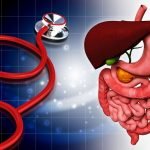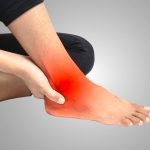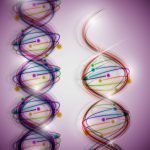Homeopathy for Autistic Spectrum Disorder
Autistic Spectrum Disorder
Angelica Lemke, ND
Nothing tugs more at my heartstrings than taking the cases of children on the autism spectrum. It is this compassion, and the complexity of these cases, that has driven me to explore diverse methodologies in homeopathy to find individualized treatments for the deepest roots of imbalance in these children. In focusing almost exclusively on autistic spectrum disorder (ASD), I have had a lot of successes, with many cases recovering from their diagnoses.
Despite having a strong foundation in classical homeopathic prescribing, it has been my experience that many of the commonly prescribed remedies in ASD, from Belladonna to Zincum, help only a limited portion of my cases. On the other hand, I have had many ASD cases that have improved drastically using remedies whose major symptomatology is not centered on core autism behaviors (such as repetitive movement, poor socialization, etc). For example, I have numerous cases that have drastically improved on all levels using remedies specific for gastrointestinal pain such as Dioscorea, Euphorbium, and Colocynthis. It seems that in ASD hyperfocusing on the stereotypical symptoms of the disease can be limiting and ultimately misleading.
Another major adaptation I have made, which has shifted my case taking, is the primary reliance on the parents or caretakers for information. I will ask about unusual behaviors, what stresses the child, what brings him or her joy, and what the pregnancy was like. A case-taking technique I heavily rely on involves asking parents to close their eyes and imagine life through their children’s eyes and to speak as if they are their child. I have found that doing this taps into a parent’s empathy for the child and can unveil an amazing level of descriptive detail about what the child experiences. I will share an example of this in the case presented herein.
While precise constitutional prescribing has been critical in many successful cases, many others remained “stuck” or slow moving even with well-chosen remedies. To unblock cases and move them along, I have come to rely significantly on isopathic prescribing—the use of remedies made from the same pathogen or toxin that is linked to a specific disturbance of the system. I usually dose these remedies concurrently with a constitutional remedy. Common isopathic remedies include homeopathic preparations of bacteria, yeast, viruses, pharmaceutical drugs, environmental toxins, and even specific vaccines. For example, many children’s self-stimulatory behaviors rise when levels of bacteria such as Streptococcus or yeast rise; therefore, I will give homeopathic Streptococcinum or Candida albicans, which seems to help the body respond appropriately to these infections and thus help mitigate associated behaviors.
Case Study
David (4 years old) is diagnosed with autism and is nonverbal. He has intense screaming episodes if separated from his mother or prompted by gut pains. He is always clutching onto toy cars in both hands. He has paranoid behaviors after consumption of certain foods, chemical contact, and storms. He will be “pacing, literally jumping out of his skin, like a scraping feeling of nervous system, like somebody is running nails down chalkboard. He has a lot of energy and a small funnel for it to get out.” He has moments of extreme sadness. At times, it looks like he is “talking to the trees,” and he had an intense emotional breakdown when he saw a group of trees that were uprooted near his house.
His mother has autoimmune lupus and while pregnant was taking fluoxetine hydrochloride, allergy medications, and acetaminophen–diphenhydramine hydrochloride. She also has a history of obsessive-compulsive disorder (OCD) and anorexia. The mother says, “I feel like my disease is his disease, but his is more extreme.” In cases like these, I treat both the mother and child at the same time, usually with the same remedies because of the overlap in symptoms; this is treating the whole system.
After gathering all the facts of the case, I get into the “heart” of the case. I asked David’s mother to close her eyes, relax, and create a clear image of her son when he is in pain—his posture, his expression, the sounds he makes, and “what it feels like to be him.” She said he feels “overwhelmed, with no understanding of the behaviors of others, why they do what they do. I love simple things, trees, flowers; those make sense. The complexity of other aspects around me are confusing. Hopeless, afraid, insecure, isolated, untrusting.” When asked about the sensation of body pain, she said: “spinal cord throbbing, burning of the muscles along the spine; the tissue feels like it is tearing away, pulling and stretching, and it feels strangulated at the knees and hands, like there is a disconnection there.”
The sensation described fits with the Thymelaeaceae family, which is associated with a sensation that parts of the body are twisting off to the extent that the hands feel like they are completely separated. This plant family also relates to the feeling of not being appreciated by one’s parents. Upon further investigation into the case, I discover that the mother says, “my mother didn’t want me to be truly happier than her; she wanted me to take care of my brother, do all the chores, not be a kid. I had a complete disconnection from emotion at that time in my life.”
Based on these sensations, the remedy Daphne indica from the Thymelaeaceae family was prescribed to both mother and child. Within the first few weeks of taking the remedy, David had a lot of “firsts.” He put down the toys that he always clutched, played soccer, went swimming, and started answering yes or no questions appropriately, all for the first time. He also had 3 to 5 bowel movements a day instead of the usual one, which was seen as a sign of detoxification.
By month 4, isopathic prescriptions of Streptococcinum and Candida were introduced. Streptococcinum helped to reduce the OCD symptoms, teeth grinding, and self-talk. Candida decreased the symptoms of arm flapping, silly behavior, and bloating. A homeopathic preparation of fluoxetine hydrochloride was also introduced, which helped to detoxify the nervous system and resulted in increases in language. By his sixth month into homeopathic treatment, David no longer had “gut” issues, his language had exploded, and he has made friends in school. A year into homeopathic treatment, the mother said, “he started drawing pictures (last year he couldn’t even color, this is amazing!), he is now talking in sentences, he’s so happy and doing amazing in therapy!”
This is an exceptional case in terms of the speed and clarity of improvement, much of which I can attribute to a mother astute in the holistic philosophy of healing and with strong sensitivity to know when to redose and move up in potencies. On the other hand, the combined use of a carefully individualized, if unusual, constitutional remedy, as well as the use of multiple isopathic remedies to move the case along and address blockages, is very representative of many of my cases. Each ASD case is a unique puzzle, and what I have learned is that the complexity demands an equally diverse tool kit and an explorative approach.
 Angelica Lemke, ND is a graduate of Bastyr University (Kenmore, Washington) and Georgetown University (Washington, DC). She has been a speaker at the Autism One convention and the National Autism Association convention and has a large international clientele spanning 15 countries. Most of her consultations are done via Skype. E-mail: [email protected]
Angelica Lemke, ND is a graduate of Bastyr University (Kenmore, Washington) and Georgetown University (Washington, DC). She has been a speaker at the Autism One convention and the National Autism Association convention and has a large international clientele spanning 15 countries. Most of her consultations are done via Skype. E-mail: [email protected]









